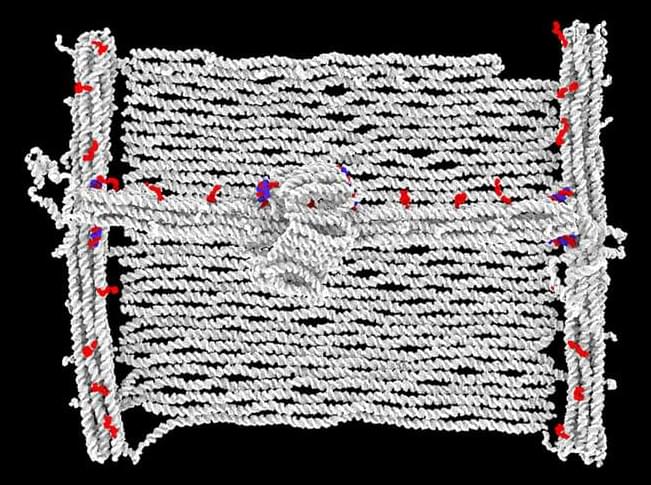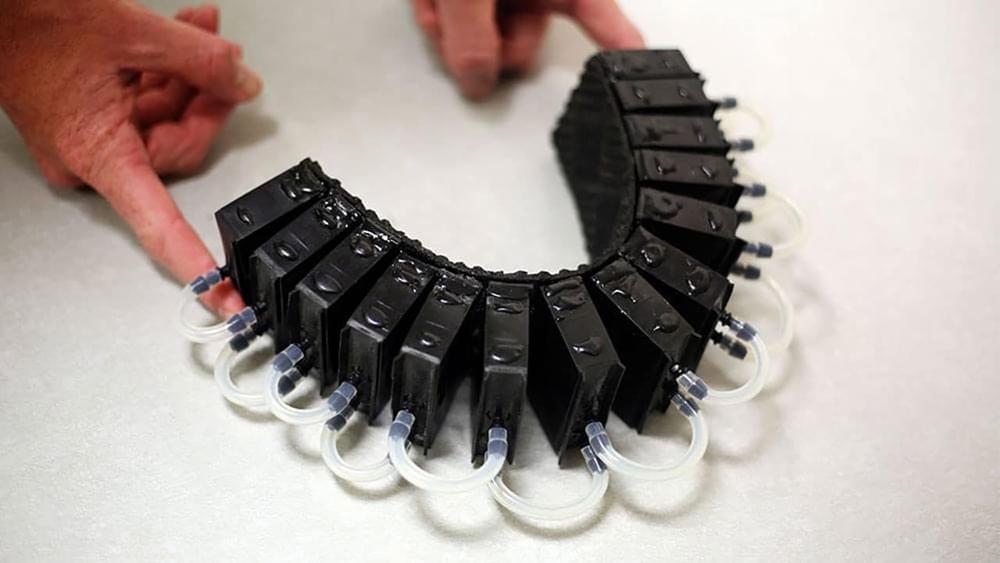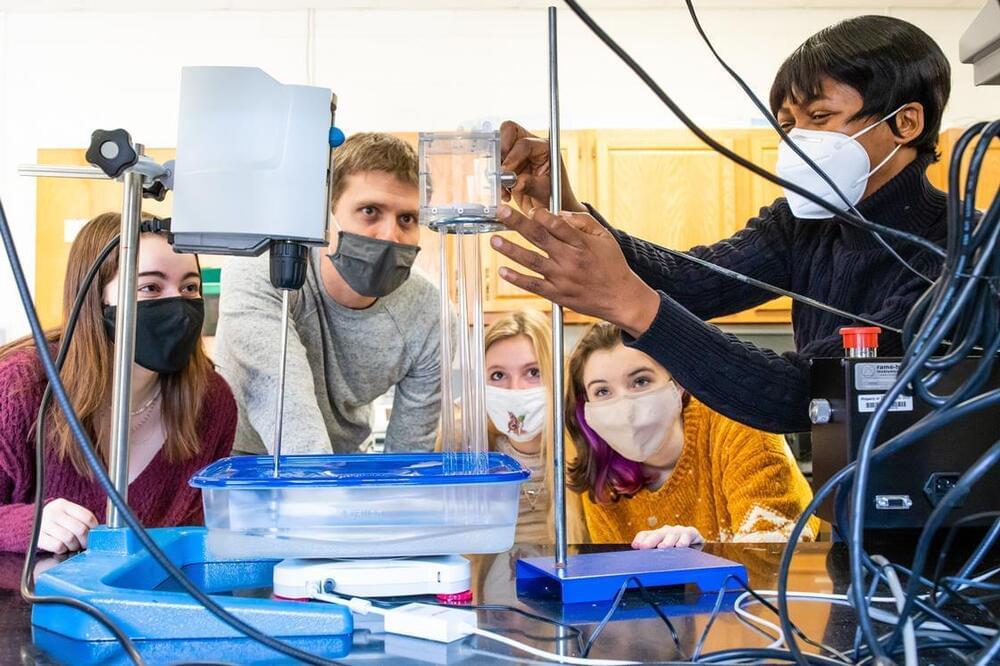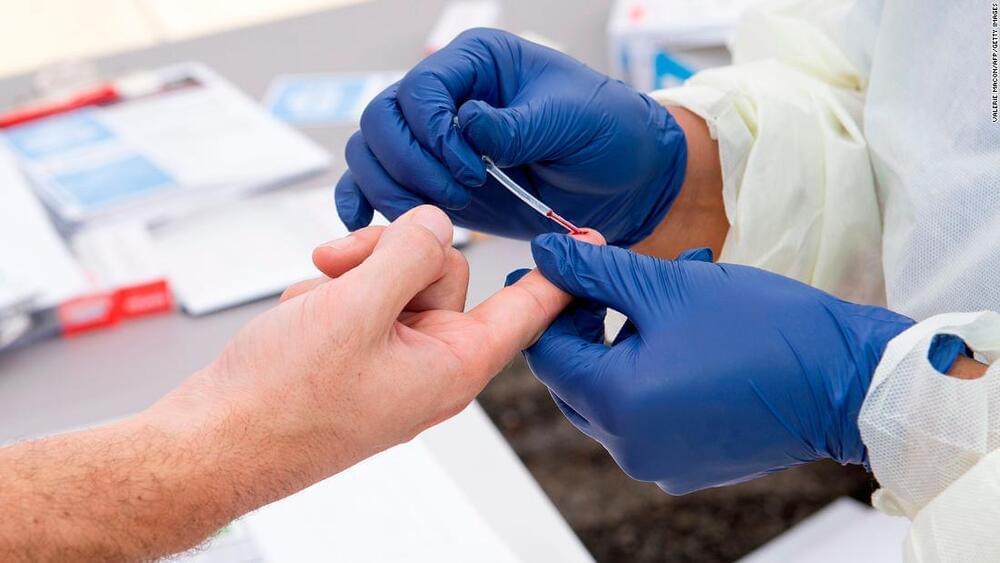A nanoscale machine made from DNA moves under external control and prints by selectively modifying pixels on a canvas.


Jessica gives us a driving tour of SpaceX Starbase Texas with a Starlink V3 terminal strapped to the roof of the Kirsh Kona! And Anthony Gomez from Rocket Ranch also makes an appearance to give us some Starbase safety tips. Follow Anthony on Twitter @AnthonyFGomez.
https://www.rocketranchbocachica.com.
This subscriber video edit was provided by subscriber, channel member and channel moderator, Nik Lovell. Follow Nik on Twitter @nik_lovell.
Link to original live stream:
Music:
“Cosmo — Arpeggios” (Shutterstock)
Please consider supporting the channel on Patreon:
http://www.patreon.com/jessicakirsh.
Please consider joining the channel on YouTube:

Calculator is also more smart than humans but it made our life easier.
While the win over Google’s AI was impressive, more advanced developments are being made behind the scenes as well. The integration of multiple AIs, called neural networks, has led to computers with unique personalities and quirks that were previously only seen in humans.
AI is already outsmarting humans
When we talk about artificial intelligence (AI), our minds often turn to visions of a robot uprising, sentient computers, and other science-fiction fantasies. As it turns out, though, AI has already started doing some pretty impressive things in real life: Researchers at Google just announced that their AI was able to beat one of mankind’s best players at Go—an ancient Chinese game so complex that a computer had never beaten a human master. The victory was significant for more than one reason: first, it shows that AlphaGo can already outsmart humans; second, it suggests there’s real potential for AI in solving problems we haven’t been able to solve before.

“Pressure and mobility have an inverse relationship,” Diaz Artiles said. “The more pressure you have in the spacesuit, the lower the mobility. The less pressure you have, the easier it is to move around.”
“Imagine wearing really tight Under Armour or really tight leggings. That pressure pushing down on your body would be in replace of or in addition to gas pressure,” Kluis said. “So the idea with the SmartSuit is that it would use both mechanical pressure and gas pressure.”
Diaz Artiles and her team continue to work on the SmartSuit architecture, and the actuator prototypes are a promising development in creating a more accommodating and resourceful spacesuit for future planetary missions. Their end goal would be for it to feel like the wearer is moving without the spacesuit on and without breaking too much of a sweat.

MIT spinoff Quaise Energy is building a drill that vaporizes rock — so that we can tap into the energy miles below our feet.
Geothermal energy: Earth’s core is as hot as the surface of the sun, but we don’t have to go too far below the surface to start feeling the heat — in the Mponeng gold mine in South Africa, which has a depth of 2.5 miles, rock temperatures can reach 140 degrees Fahrenheit.
Geothermal power generates electricity from this natural heat, and there’s enough of it to meet the energy needs of the entire world — if you can get to it.
Perovskite solar cells might revolutionize how humans generate energy from sunlight.
https://brilliant.org/ElectricFuture.
First 200 people get 20% off annual premium subscription.
In this video we’ll explore the world’s fastest improving new solar technology, and provide an exclusive peek inside the lab of a team working on this breakthrough material.
Imagine an inexpensive solution of perovskite crystals that can make a photovoltaic cell so thin, that just half a cup of liquid would be enough to power a house. A solar panel so lightweight, that it can be balanced atop a soap bubble. That is known as the holy grail of solar energy. So when will we see perovskite solar panels used for a solar power system for your home? Maybe sooner than you expect.
Currently, only 2% of global electricity comes from solar power. And 90% of that, comes from crystalline silicon-based solar panels, the dominant material technology.
While abundant, silicon has downsides related to efficiency, manufacturing complexity, and pollution that prevent it from being an absolute no brainer. Emerging thin films like perovskites present a bright future. Imagine solar cars like a solar tesla, solar yachts, or a solar plane.
Solar cell technologies can be classified into two categories, wafer-based or thin-film cells. Perovskites are the leading contender in emerging thin films. Topics covered in this video include applications, perovskite crystal structure, working principle of perovskite solar cells, efficiency limits, multi-junction solar cells, shockley-queisser limit, how solar works, solar simulator, band gap, manufacturing, vapor deposition, how solar panels are made, and the future of solar power.
The world’s first real-time brain-sensing wearable, allows users to take control of their world with a single thought. Get yours today and join us in building the first generation of mind-enabled experiences.
Available for order at $399.
Follow us:
Twitter: https://twitter.com/nextmind.
Linkedin: https://www.linkedin.com/company/11251811/
Facebook: https://www.facebook.com/nextmindlab/
Instagram: https://www.instagram.com/nextmindlab/
Film director — Nicolas Gazeau.
Music — Jérôme Fagnet.
Production — Content Factory by Prodigious.
–
NextMind is a neurotech startup changing the way people interact with the world. Our real-time Brain-Computer Interface brought BCI technology out of the lab and to the masses.
We’re working with creative developers and businesses around the world to explore the applications of our Brain-Computer Interface in entertainment, gaming, industry, and consumer tech. Join us in building the mind-enabled experiences of tomorrow.

Mangrove trees inspire thermal and membrane-based desalination system.
Four US students, taking part in a program aimed at high school girls interested in engineering, have designed a desalinating water bottle. The currently hypothetical device would be compact and portable so could offer increased accessibility over existing desalinating designs that mimic transpiration.
Laurel Hudson, Gracie Cornish, Kathleen Troy and Maia Vollen met at Virginia Tech’s C-Tech2 program where they were given an assignment to ‘reinvent the wheel’. Choosing to focus on the global water crisis and inspired by drinking straws used by hikers to purify water, they considered if it was possible to make a bottle that produced drinking water from seawater. They reached out to Jonathan Boreyko, an associate professor in the department of mechanical engineering, who was researching synthetic trees at the time. He agreed to help, and, during the height of the Covid-19 pandemic, the group met virtually at night to discuss their research. Along with Ndidi Eyegheleme, a graduate student in Boreyko’s lab, they planned and produced a model to evaluate the inner workings of their design.

Nearly 60% of adults and 75% of children have antibodies indicating that they’ve been infected with Covid-19, according to new data from the US Centers for Disease Control and Prevention.
The data come from an ongoing study of blood samples sent to commercial laboratories across the US.
At the beginning of December, an estimated 34% of Americans had antibodies showing that they had once been infected with the virus that causes Covid-19. By the end of February, after an avalanche of cases caused by the Omicron variant, that number had jumped to 58%.